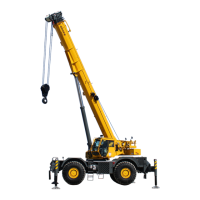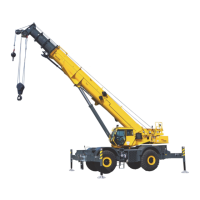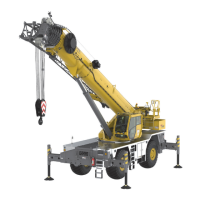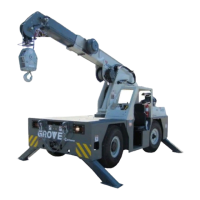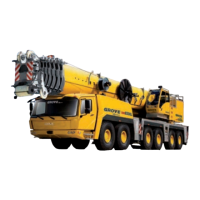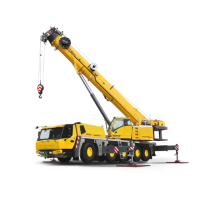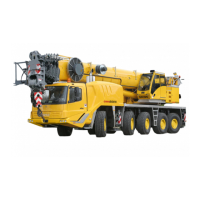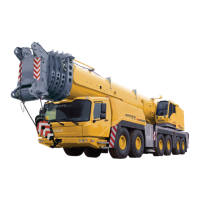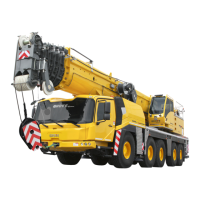HYDRAULIC SYSTEM GRT9165 SERVICE MANUAL
2-68
Published 10-01-2020 Control # 699-00
If an issue persists after performing the above procedures,
contact your local Grove distributor or Manitowoc Crane
Care.
CYLINDERS
Cylinder Rod Surface Protection
Steel cylinder rods include a thin layer of chrome plating on
their surfaces to protect them from corroding. However,
chrome plating inherently has cracks in its structure which
can allow moisture to corrode the underlying steel. At typical
ambient temperatures, hydraulic oil is too thick to penetrate
these cracks. Normal hydraulic operating temperatures will
allow hydraulic oil to warm sufficiently to penetrate these
cracks and if machines are operated daily, protect the rods.
Machines that are stored, transported, or used in a corrosive
environment (high moisture, rain, snow, or coastline
conditions) need to have the exposed rods protected more
frequently by applying a protectant. Unless the machine is
operated daily, exposed rod surfaces will corrode. Some
cylinders will have rods exposed even when completely
retracted. Assume all cylinders have exposed rods, as
corrosion on the end of the rod can ruin the cylinder.
It is recommended that all exposed cylinder rods be
protected using Boeshield® T-9 Premium Metal Protectant.
Manitowoc Crane Care has Boeshield® T-9 Premium Metal
Protectant available in 12 oz. aerosol cans by ordering part
number 9999101803.
Leak Check
A hydraulic cylinder should not be disassembled unless it is
essential. The following checks will provide a means of
determining if a cylinder has a faulty or leaking piston seal.
1. Extend rod to its maximum stroke. Remove retract hose
from cylinder. Cap retract hose.
2. Apply hydraulic pressure to piston side of cylinder and
observe open cylinder port for leaks. If leaks are
observed, cylinder seals must be replaced.
3. Fully retract cylinder rod (except telescope cylinder).
Remove extend hose from cylinder. Cap extend hose.
4. Apply hydraulic pressure to retract (rod) side of cylinder
and observe open cylinder port for leaks.
If leaks are observed, cylinder seals must be replaced.
5. Reconnect all cylinder ports.
Temperature Effects On Hydraulic Cylinders
Hydraulic oil expands when heated and contracts when
cooled. This is a natural phenomena that happens to all
liquids. The coefficient of expansion for API Group 1
hydraulic oil is approximately 0.00043 cubic inches per cubic
inch of volume for 1°F of temperature change. Thermal
contraction will allow a cylinder to retract as the
hydraulic fluid which is trapped in the cylinder cools.
The change in length of a cylinder is proportional to the
extended length of the cylinder and to change in temperature
of the oil in the cylinder.
For example, a cylinder extended 25 feet in which the oil
cools 60°F would retract approximately 7 3/4 inches (see
chart below).
A cylinder extended 5 feet in which the oil cools 60°F would
only retract approximately 1 1/2 inches. The rate at which the
oil cools depends on many factors and will be more
noticeable with a larger difference in oil temperature verses
the ambient temperature.
Thermal contraction coupled with improper or inadequate
lubrication or improper wear pad adjustments, and operation
at low boom angles may, under certain conditions, cause a
“stick-slip” condition in the boom.
This “stick-slip” condition could result in the load not moving
smoothly. Proper boom lubrication and wear pad adjustment
is important to permit the boom sections to slide freely. Slow
movement, of the boom may be undetected by the operator
unless a load is suspended for a long period of time.
To minimize the effects of thermal contraction or “Stick-slip” it
is recommended that the telescope joystick is activated
periodically in the extend position to mitigate the effects of
cooling oil. If a load and the boom is allowed to remain
stationary for a period of time and the ambient temperature is
cooler than the trapped oil temperature, trapped oil in the
cylinders will cool.
The load will lower as the telescope cylinder(s) retracts
allowing the boom to come in. Also, the boom angle will
decrease as the lift cylinder(s) retracts causing an increase
in radius and a decrease in load height.
CAUTION
Cylinder operation and inclement weather will remove the
Boeshield® protectant; therefore, inspect machines once
a week and reapply Boeshield® to unprotected rods.
DANGER
Ensure pressure is applied to piston side of cylinder only
and retract hose is capped.
DANGER
Ensure pressure is only applied to retract (rod) side of
cylinder and extend hose is capped.
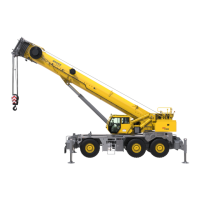
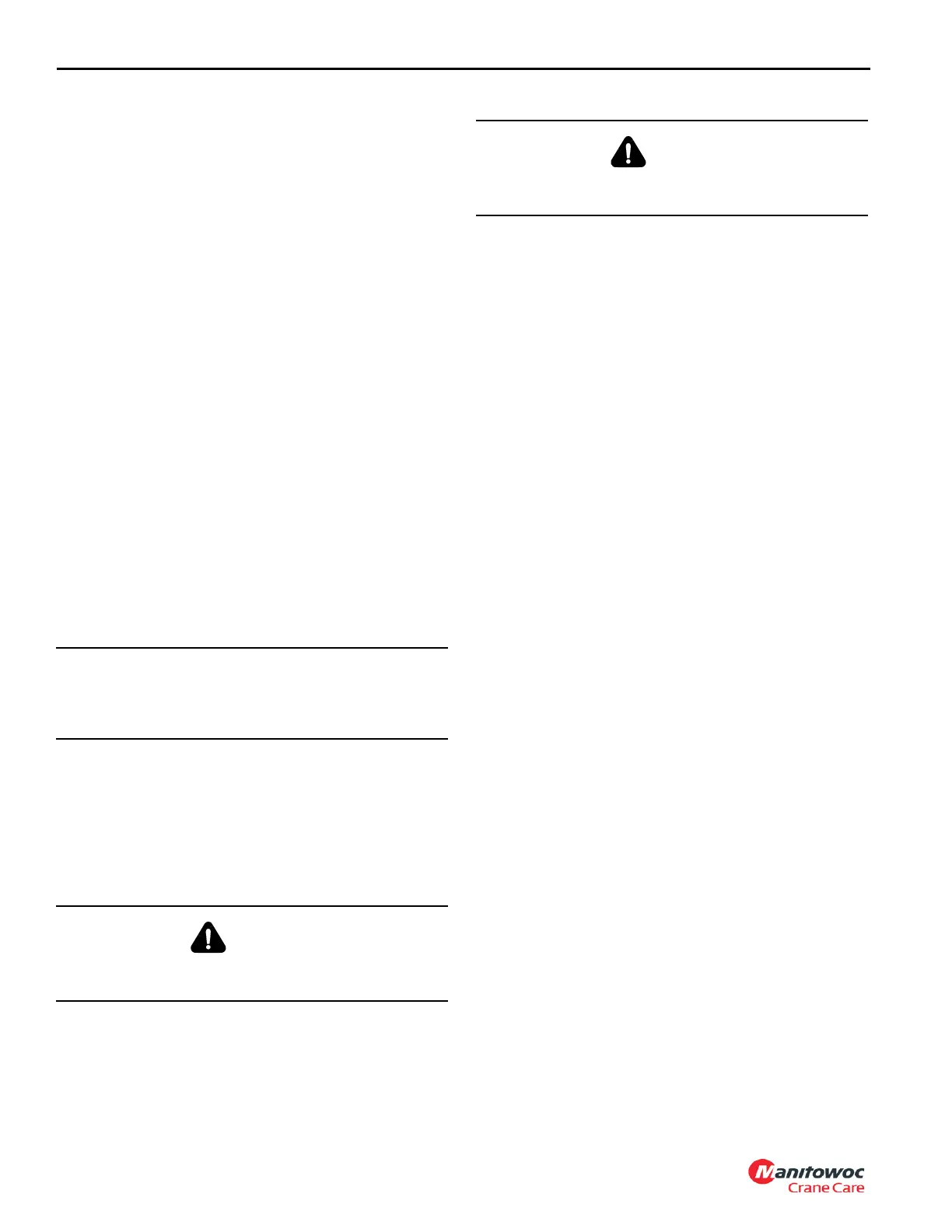